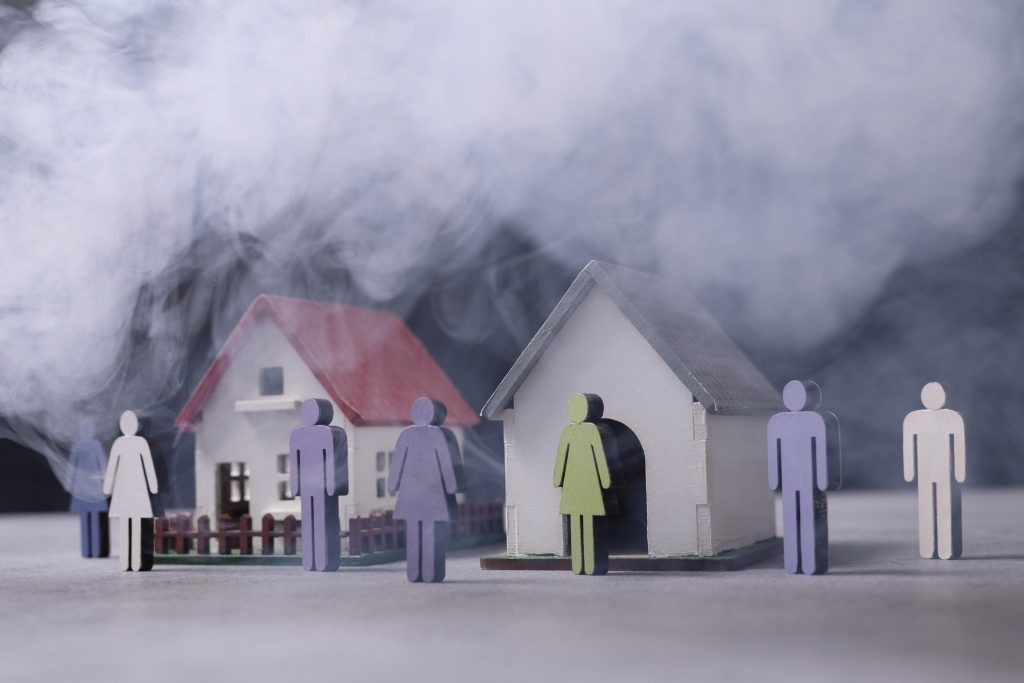Spotting and preventing fires at Home

Designed by Freepik
Wildfires have become a daily news segment and are being shown all around the country. But, closer to home, do we ever consider what fire hazards are and how we can prevent them? Let’s take a look at some of those hazards and how we can stop them!
Electrical fires are on the rise. According to the U.S. Fire Administration, older homes have seen a 6% increase in the U.S. between 2013 and 2022. Home fires can be devastating. Let’s break down the most common causes and emerging hazards.
Common Causes of House Fires:
- Cooking fires are the leading cause of home fires.
- Grease fires from unattended cooking or cooking while distracted are a common issue.
- Heating equipment such as space heaters, particularly older models or those placed too close to flammable materials, can cause fires.
- Fireplaces and wood stoves also need proper maintenance.
- Electrical wiring, including faulty wiring, overloaded circuits, and malfunctioning appliances, can spark fires. Frayed cords and improper use of extension cords can also cause fires.
- Smoking cigarettes and other smoking materials can easily ignite flammable materials, especially if not disposed of properly.
- Candles left unattended are a significant fire risk. They can easily cause fires if left near flammable items or knocked over.
- Flammable liquids, including gasoline, paint thinners, and other flammable liquids, can be a significant risk when not stored correctly.

Designed by Freepik
Now, let’s look at some newer risks we, as homeowners, should be aware of.
Newer Fire Hazards to Address:
From the widespread use of rechargeable batteries to modern electrical setups and overlooked everyday risks, understanding these hazards is key to ensuring a safer environment. Stay tuned as we dive into these issues and offer practical tips on how to prevent fires before they start.
- Lithium-ion batteries are now in many household items, such as smartphones and electric bikes. If damaged or improperly disposed of, they can overheat and cause fires. It is important to follow all manufacturer guidelines for these batteries.
- Modern appliances like high-efficiency dryers or microwaves can create fire hazards if vents are blocked or not cleaned regularly.
- Cluttered or unventilated spaces and the accumulation of flammable materials or poor ventilation can increase the risk of fires, especially in basements or attics.
- Smart home devices are convenient but can pose risks if they malfunction or are poorly installed. Ensure these devices are certified and installed by professionals.
- Electric vehicles (EVs) are becoming more common, and so are fires related to them. Battery fires in EVs can be challenging to manage, so proper charging practices and maintenance are crucial.
- 3D printers can overheat or malfunction, especially if left unattended.
Preventive Measures:
- Stay in the kitchen, and never leave food cooking unattended.
- Install and maintain smoke alarms and regularly test and change the batteries.
- Get regular inspections. Have your electrical system and heating equipment inspected regularly.
- Avoid overloading electrical outlets, and don’t use extension cords for permanent wiring.
- Use surge protectors to protect appliances from electrical surges.
- Smoke outside and never smoke in bed or around oxygen tanks.
- Proper storage and disposal are necessary for flammable liquids and batteries.

Designed by Freepik
Understanding both traditional and emerging fire hazards is key to creating a safer home environment. By staying informed, you can take proactive measures to reduce risks and protect what matters most.
Now that you’re equipped with the knowledge to stay safe, enjoy peace of mind—get outside, fire up the grill, and enjoy a delicious steak dinner!
